Rip’s heart died away, at hearing of these sad changes in his home and friends, and finding himself thus alone in the world. Every answer puzzled him too, by treating of such enormous lapses of time, and of matters which he could not understand: war—Congress–Stony–Point;—he had no courage to ask after any more friends, but cried out in despair, “Does nobody here know Rip Van Winkle?”
A year before The Legend of Sleepy Hollow, which terrified readers with the headless horseman, Washington Irving penned Rip Van Winkle. It describes a villager wandering up into the wooded slopes of the Catskill Mountains, falling in with a mysterious, alcohol-laden party, only to wake up 20 years later. He comes back down to his village, a snow-white beard dangling at his waist, to find the country and culture changed around him.
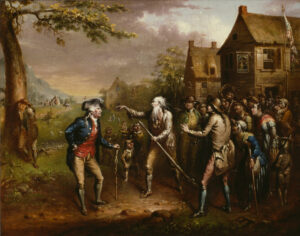
The Return of Rip Van Winkle by John Quidor, oil on canvas, 1849
Recently, I had my Rip Van Winkle moment. I was considering making a return to Modern, with the remaining pieces of Burn sitting in my shopping cart. One morning, I stopped and thought, “How will you feel if you spend all week looking forward to Saturday Modern, you drive 45 minutes to the store, suspend a Rift Bolt, and then someone opens with an evoked Grief and Malakir Rebirth?”
Copies of Boros Charm, Lava Spike, and Rift Bolt sat in my shopping cart for weeks. They took only seconds to clear out. A few clicks later and I was browsing Warhammer 40K models, thinking of my half-painted starter set in the closet.
Modern players everywhere have found themselves in a similar situation. The changes of Modern Horizons 1 and 2 have upended the apple cart, more than any sets which filtered through Standard. This has unequivocally changed the face of Modern, enforcing an artificial rotation in a format built upon slower changes. We’re set to experience this again with the upcoming Lord of the Rings set, which will also go directly to Modern. The carousel keeps spinning.
Modern is a format I once knew, but it doesn’t know of me anymore.
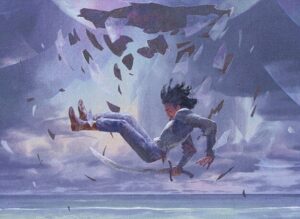
Suspend by Lake Hurwitz
A Path Which Splits in Two
As the amount of COVID-19 began to subside, Magic fans began returning to game stores. Modern decks jostled around in backpacks, ready to be shuffled up again for the first time in a year or two. Amidst the haze of quarantine, these decks sat stagnant on shelves or inside white four-row boxes.
Modern was divided into two categories of players: those who rode the waves of MTGO throughout quarantine, and those who hadn’t played since early 2020. For the online veterans, they had seen a lot unfold in the past years. They weathered everything from Uro, Titan of Nature’s Wrath, Arcum’s Astrolabe, and a world in which you always saw a Turn 3 Lurrus of the Dream-Den.
Some returning players welcomed this new era of Modern with open arms. Their experience would be akin to a bear emerging from hibernation. They’d stretch, feel the sun on their skin, and head off to the frigid river for some fish. Their time away from tabletop Magic was a chance to recalibrate what they wanted from Modern, and the new landscape was rife with opportunity.
Others were Rip Van Winkle, waking up to a format which left them behind. They might’ve been a fixture of their local scene, piloting decks like Jund, Storm, or Humans, but it wasn’t their time anymore. They were faced with three choices:
- Play a deck which had largely become a relic of a bygone era, before the days of Zoom happy hours and A-listers singing “Imagine”.
- Pick a new deck to play in Modern, one likely jammed with chase rares from Modern Horizons sets.
- Find something else to do.
I was a Rip Van Winkle. I had Five-Color Humans and Rakdos Goblins at my disposal, playing regularly at my local game store. But to return to Modern would mean looking at a Fury-sized mountain to climb. I’d be setting myself up for a 45-minute drive to the store, to have the opportunity of being blown out on Turn 1 or 2 by a free spell.
Despite my frustrations, I remembered how accepting change is critical to moving into the future. Instead of being disappointed in my former strategies, I looked for new directions. I once took solace in the truth of “Lightning Bolt always hits for three, no matter how expensive a playset of Ragavan costs.” I thought building Burn would be my way of picking Answer #2, but soon realized a hard truth. It didn’t matter how much I loved casting Goblin Guide; if I wasn’t excited to play against the Modern of today, then why show up to begin with?
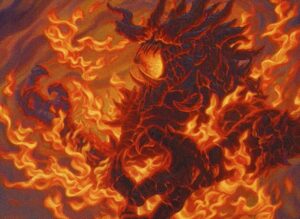
Fury by Raoul Vitale
Nothing Beyond the Horizon
You could pin a lot of this onto Modern Horizons sets. On one hand, you have a revolutionary way to inject life into the format. You have old favorites like Imperial Recruiter and Vindicate, mixing with newcomers like Solitude and Murktide Regent. Ideas are swirling around in an eddy, producing new decks and archetypes seemingly overnight. Counterspell is one of my all-time favorites, and I was happy to see it find its way to new pastures. But some newcomers are tougher to embrace.
The pitch elementals are emblematic of FIRE and Modern Horizons design. They’re powerful and versatile; a threat and answer combined into one. While their free casting cost is traditionally problematic, one of my biggest hang ups is on a different axis.
They have no history.
A card like Fury has no heritage with the game, no competitive roots to trace. It never ran the tables at a Pro Tour, or invited cheers when it rotated out. It has no folktales of prominence in other formats, to join the all-star lists of former Standard heavyweights. It’s simply famous for being famous, the hanger-on of others which came before it. New cards enter Commander all the time, but Modern had a defined lineage which has now been abandoned. Fury, and others like it, are here to stay.
They’re not going away before we do.
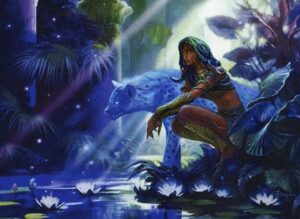
Timeless Witness by Deruchenko Alexander
A Complicated, But Loving Relationship
As time goes on, people gloss over shortcomings of the past. The Modern I knew and loved was riddled with issues, including gameplay which many called troubled and noninteractive. Some matchups were like two ships passing in the night, a contest more of a dice roll than the cards. But to me, it was this challenging, convoluted, but loving family I was living in.
My friends and I rode the highs and lows together. We cheered when beating Tron, and sympathized with those who had to let a Storm player untap with Goblin Electromancer. It wasn’t perfect, but our decks pulled from years of Magic history. When I look at the top cards played in the format now, it’s only then do I realize how much the history made Modern a format for me. Tarmogoyf, Dark Confidant, Lingering Souls, and others line the road on the way to whatever it is we have now.
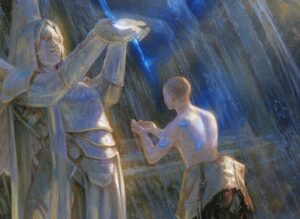
Moderation by Randy Vargas
Looking Forward
Do I truly miss the Modern of yesteryear? Or is this more about me missing the time I spent with others? Neither are coming back the way they were, so it’s time to look forward instead. Old signpost cards are gone, and new ones have come to replace them. Cryptic Command wasn’t going to last forever, nor was Mantis Rider, so it’s time to let others shine. Everything changes at some point. I do wish those changes weren’t so closely linked with one or two sets, though.
I might return to Modern someday, particularly when I’m living somewhere which doesn’t require a long drive to a game store. But until then, it’s time to shave my proverbial beard, put my son down for bed, and paint some Space Marines.
Travis Norman (he/him) is a writer and photographer from the wooded foothills of New York, currently living in South Carolina. He plays nearly every Magic format, but has a special love for Legacy, Premodern, and Canadian Highlander. He has loved Magic since Starter 1999, but he champions having a healthy mental and financial relationship with the game. When not playing games, he enjoys cycling, tea, and dog parks. You can follow his exploits here on Instagram.

